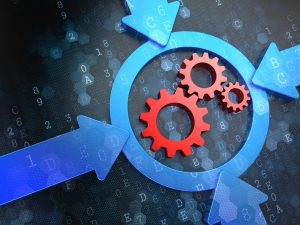Cloud Migration: Orchestration vs. Automation
 There’s a lot of hype about orchestration these days. It’s become a catch-all phrase and a popular term to market to IT audiences, as they scramble for a one-stop solution for managing today’s complex IT transformations.
There’s a lot of hype about orchestration these days. It’s become a catch-all phrase and a popular term to market to IT audiences, as they scramble for a one-stop solution for managing today’s complex IT transformations.
Tools abound across the industry to help automate specific tasks associated with managing of data, process, applications and infrastructure.
While still others claim that they can orchestrate the dynamic flow of applications, data and infrastructure.
So, what’s the difference between orchestration and automation? (Or maybe even more important, why does it matter?)
The definition of automation is setting up a single task to run on its own – automating one thing. This single task can be anything from launching a web server, stopping a service, or invoking a call to initiate a failover event.
The main difference between a workstream “automation” and an “orchestration” (in the context of cloud
computing) is that workstreams are processed and completed as processes within a single domain for automation purposes, whereas true orchestration manages the flow of data and a workstream of both human and automated tasks directed towards larger goals and objectives.
Orchestration vs Automation: The Difference Matters.
True orchestration is powerful because it can tie together multiple automated and manual processes, and actually accelerate project velocity. But it’s also essential to manage today’s dynamic IT environment:
- Data captured from silo tools – at any phase of a project – can be leveraged for further analysis and planning and decision making, and even be passed as parameters to other tools during the execution phase.
- Cloud assessment and cost data can be incorporated along with data from other sources to provide a comprehensive, rich set of data for analysis and planning.
- Status data from one process, such as the successful completion of a task or action, can be shared with other tasks or humans for further action or documentation.
- Projects are accelerated with orchestration – multiple streams of tasks can be executed in parallel. Orchestrated task sequences could be created using 1-click generation of runbooks.
These two levels of coordination – the flow of data and the sequencing of human and machine tasks – bring people and process from both the business and the IT side of the table together to create a unified system for managing IT transformation.
So when vendors claim their tool can orchestrate, take a moment to think about what you really need. And what they can really deliver.
See how TransitionManager can orchestrate your next IT transformation:
